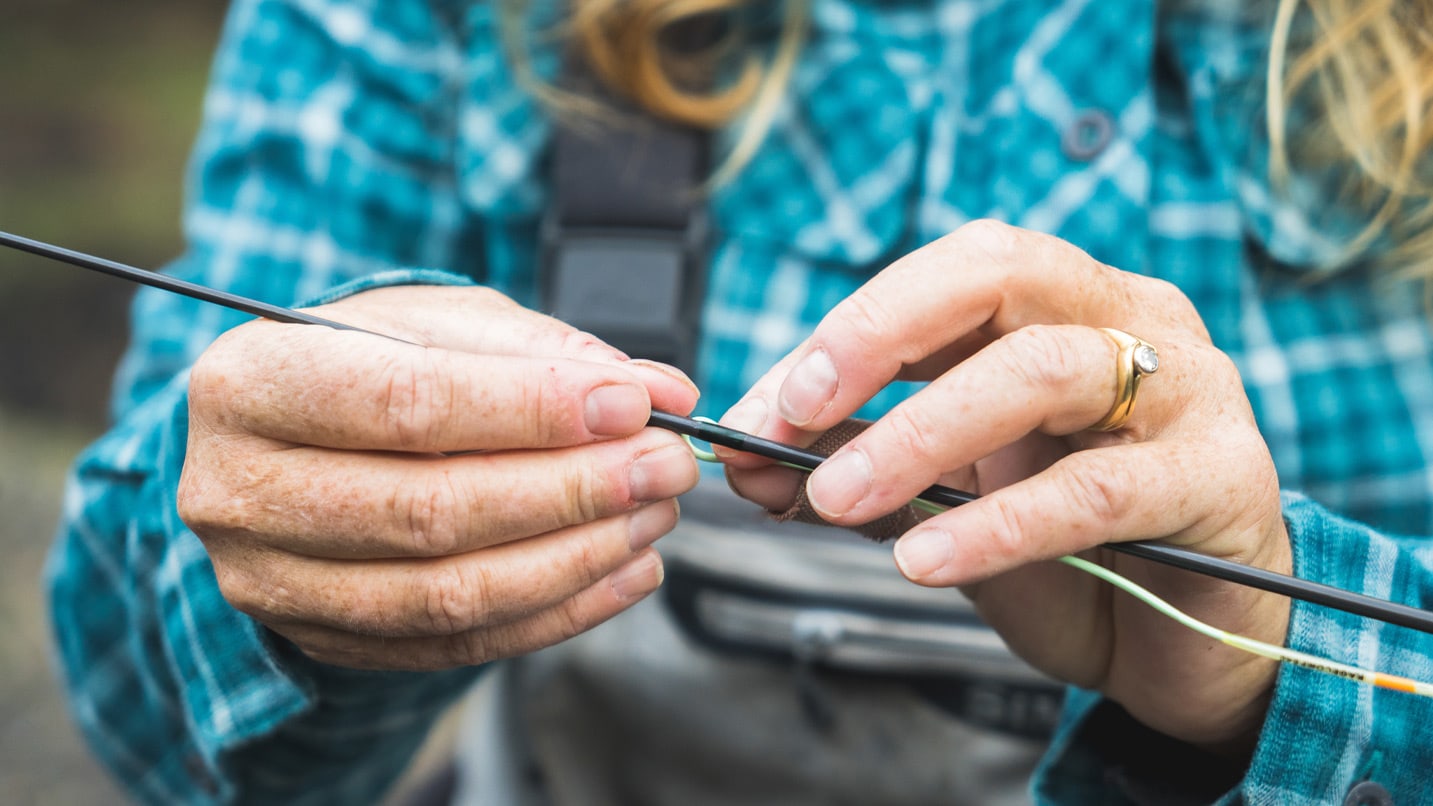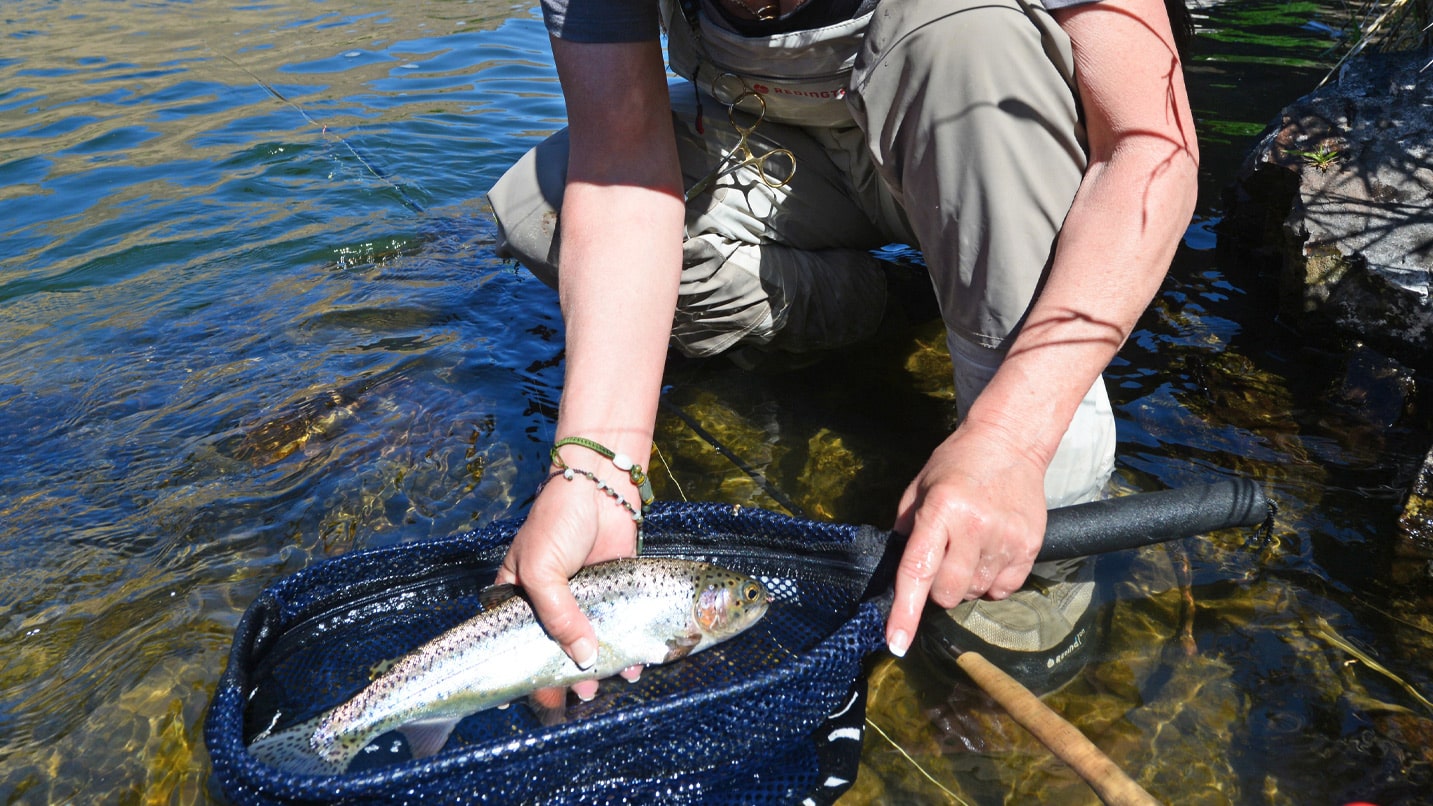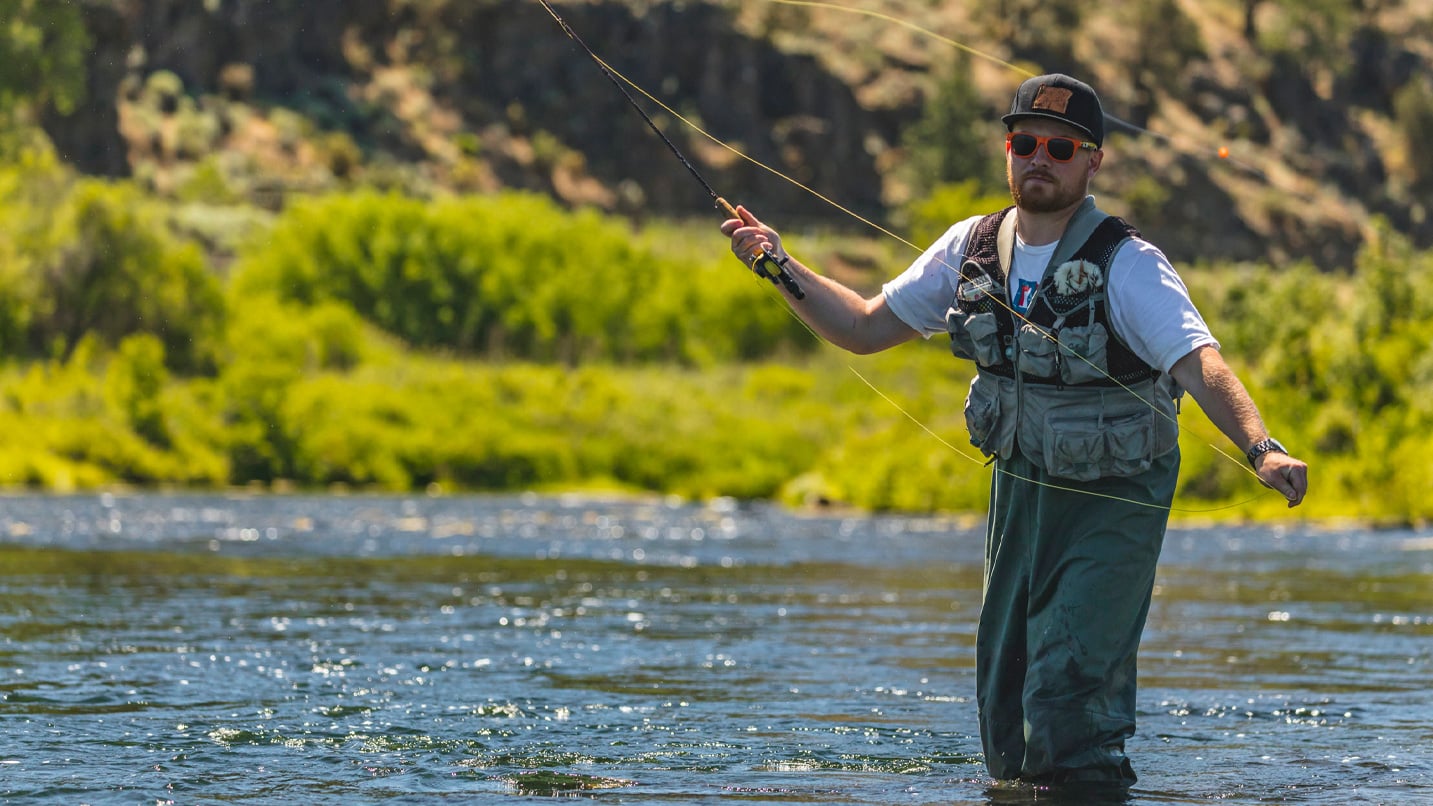Chasing steelhead with a fly in Oregon’s high-desert rivers in fall is the stuff most fly-fishers’ dreams are made of. The Deschutes River in particular is a hotbed — there’s even a famed steelhead run named for it. There’s the allure of the canyon walls, the brisk fall air and the smell of sagebrush. The experience isn’t complete without the sounds of high-desert chukar birds and turkeys flushing out of the bushes and the sight of bighorn sheep scrambling down the canyon walls.
But the real draw is in the water. Starting in July, steelhead start entering the lower Deschutes both as a destination to later spawn and as a cold-water sanctuary as they make their long journey east.
In late summer 2021, however, Oregon steelhead fishers’ dreams dissipated as the famed Deschutes and many other Columbia River tributaries were closed to steelhead fishing due to poor returns of the species in the Columbia River Basin. In fact, the current forecast for steelhead above Bonneville Dam shows one of the lowest runs on record. Closing steelhead fishing will provide protection for wild steelhead and ensure that hatchery efforts can thrive. Read up on the Oregon Department of Fish & Wildlife’s full closure information.
“Extending these closures to the entire basin will ensure protection of these iconic fish for the remainder of this run year,” says Jason Seals, ODFW’s district biologist for the Lower Deschutes. “We understand this has an impact on anglers and local communities and it’s a tough decision, but the right one in this case. We appreciate anglers’ understanding and support for these actions as necessary to help future generations of Deschutes steelhead.”

Support a Local Guide
Anglers can postpone trips, but fall is a beautiful time in Oregon, and there are plenty of other locations to fish for species other than steelhead. In fact, it’s the perfect time to book a guided trip with a local outfitter to support the people who depend on them for their livelihoods. “If you have a guided trip or DIY trip planned to places like Maupin or The Dalles, don’t cancel,” says Mia Sheppard, owner of Little Creek Outfitters & Guide, based in Maupin. “Rural communities need you and depend on tourism dollars. Now is the time for Oregonians to support Oregonians.”

Sustainable Solutions
The Columbia River used to be home to the largest steelhead run on the planet. Historically, upwards of a million steelhead would travel up the Columbia each year, branching out into every tributary along the way, with many going as far as the Snake and Salmon river drainages in Idaho.
Due to a variety of factors — including dams, habitat destruction, climate change and over-harvesting of fish in the past 100 years — steelhead numbers have seen a steady decline. Recent decades have been particularly harsh, with average runs dropping by more than 50% over the past 20 years. Down from an average 378,000 in 2001, the 2021 run sits at 60,000.
So much of Oregon depends on these fish — the culture, the people, the land, the water, the air. Anadromous fish (those that migrate from the ocean to their home rivers to spawn) like steelhead are truly a keystone species in the ecosystem of the Pacific Northwest.
But there is hope, with the public’s help. “The angling community has always been an advocate for the conservation and enhancement of Oregon’s natural landscapes, wildlife and fish,” says Priscilla Macy, executive director of Oregon Outfitters & Guides Association. “The rapid decline of our once-abundant fish populations is a crisis that has severely impacted businesses, livelihoods and communities that depend on the economic returns of the fishing season.” Macy’s group supports meaningful conservation efforts for steelhead.
“We must also acknowledge that impacts from fishing cannot be compared to factors including habitat loss, increasing water temperatures, dams and changing flow patterns,” she adds. “Guides and outfitters will do their best to adapt and survive, however solving this problem will require many players and decision makers to come together and implement longer-term, sustainable and collaborative solutions.”

A Resilient Species
Steelhead have returned in record numbers before. On the Sandy River east of Portland, the number of wild spring chinook increased from an average of 809 before the removal of the Marmot Dam to 2,086 afterward. The dam removal was part of the 2007 Bull Run Hydroelectric Project. The number of returning coho increased from 784 before dam removal to 1,959 afterward, and wild winter steelhead increased from 898 to 2,757.
“These fish are extremely resilient,” says Curtis Ciszek, guide and owner of Jet Boat Fly Guides, a Deschutes River guide service in Bend. “We have built dams, ruined tons of their spawning and rearing habitat, and against an extremely stacked deck, they continue to come back and reproduce.” He adds: “If we can keep fighting to improve their spawning and river habitats, they will continue to keep fighting to come back and reproduce, and hopefully in better numbers.”
Jeff Hickman agrees. He’s a steelhead advocate, conservationist, and owner and guide of Fish the Swing in Manzanita. He says the Sandy River’s Marmot Dam comeback is an example of what’s possible if partners come together and push to make decisions in the best interest of the state’s wildlife. “We need to get involved, volunteer if possible, donate to the fish-conservation groups working tirelessly on advocacy of wild steelhead,” he says. “If everyone put the same amount of energy and effort into fighting for steelhead as they do fishing for steelhead, we would save the species.”

More Fish in the Sea
The pause on steelhead fishing means that anglers can now focus on other species, since Oregon’s waterways are home to an abundance of other fish. (Check the ODFW recreation report for the latest.) The Columbia River is home to a world-class smallmouth bass, carp and walleye fishery. Oregon is home to hundreds of lakes full of rainbow trout, brown trout, brook trout and more — most of which come with spectacular mountain views. On the Oregon Coast, look for a bounty of lingcod; Pacific rockfish; coho, chinook and chum salmon; and coastal cutthroat to chase with a fly.
On the Deschutes, fall trout fishing is often overlooked, but it’s a popular world-class redband trout fishery. Little Creek Outfitters, on the Upper Deschutes, is one of several outfitters still running day trips this fall in nonrestricted areas of the Central Oregon river. Anglers can fish a smaller-sized microspey rod and swing for trout in the same way as fishing for steelhead.
Little Creek also offers a cast-and-blast package, inviting nature lovers to fish as well as hunt for chukar, which thrive in the high-desert conditions. “These birds will give you a run for your money,” says Sheppard, who owns Little Creek with her husband, Marty. “Watching a covey fly is similar to hooking a steelhead. You don’t need to catch steelhead to enjoy yourself. Experiencing the pace of the water, the wildlife, the campfires and the camaraderie is what fishing is about.”
